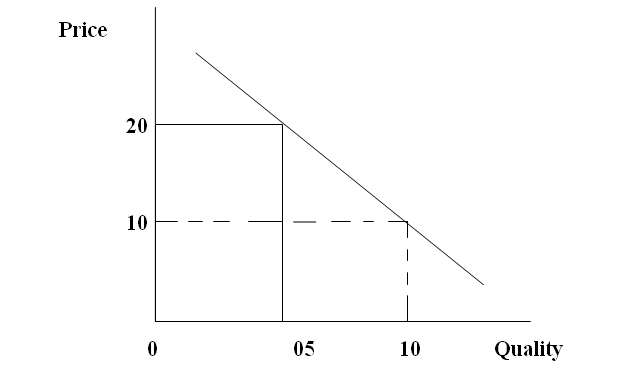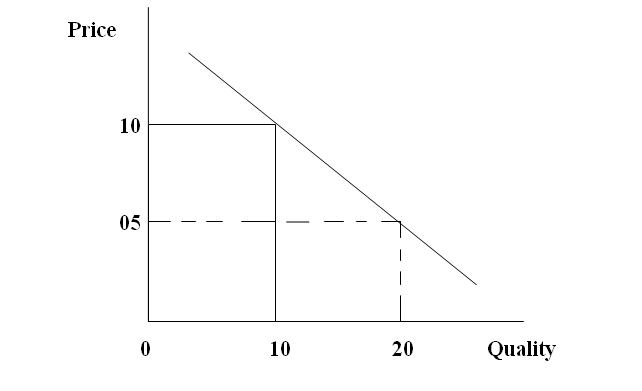In the case of farm products:
The elasticity of demand for fluid products is lower than for processed dairy products. Milk is the main raw material of the milk and dairy farm. If the price of this raw material reduces a small portion, the demand will not be so much changed. The food processor needs a huge quantity of milk for production every day. It’s their regular goods. Besides, if they reduce their production cost, they can enjoy more profit. So the price elasticity of demand for milk for producers is inelastic demand.
See the below figure:

Figure: Inelastic Demand
Here, we can see that, when the price of milk is 20tk, then the quantity of demand was 5. But when the price falls in 10tk then the quantity of demand increases by 10. Now, we should go for the calculation of elasticity of demand-
Elasticity of demand= %change in quantity/ % change in price
=10-5/10-20
=5/(-)10
=(-)1/2[negative value is not counted here]
=.5 < 1
So, here, we can see that the elasticity of demand is less than 1 which means it is inelastic demand.
In the case of a food product:
We have many dairy food products like- ice-cream, sweets, chocolate, butter, ghee, cheese, yogurt, etc. These dairy foods are convenience goods in terms of marketing but normal goods in terms of economics. In the case of normal goods, increased income leads to higher demand. It has a positive income elasticity of demand. So, we know that if the price of these foods is reduced to a small portion, then the demand for luxury goods will be higher. That’s why it is said that dairy food products have an elastic demand.

See the below figure:
Figure: Elastic Demand
Here, we can see that, when the price of ice cream is 10tk, then the quantity of demand was 10. But when the price falls in 5tk then the quantity of demand increases to 20. Now, we should go for the calculation of elasticity of demand-
Elasticity of demand= %change in quantity/ % change in price
=20-10/5-10
=10/(-)5
=2 > 1 [negative value is not count here]
So, here, we can see that the elasticity of demand is greater than 1 that’s mean it is elastic demand.
Now, we are going to describe a whole supply chain management of a dairy farm. For that, we select and visited Pran dairy for learning practical knowledge.
